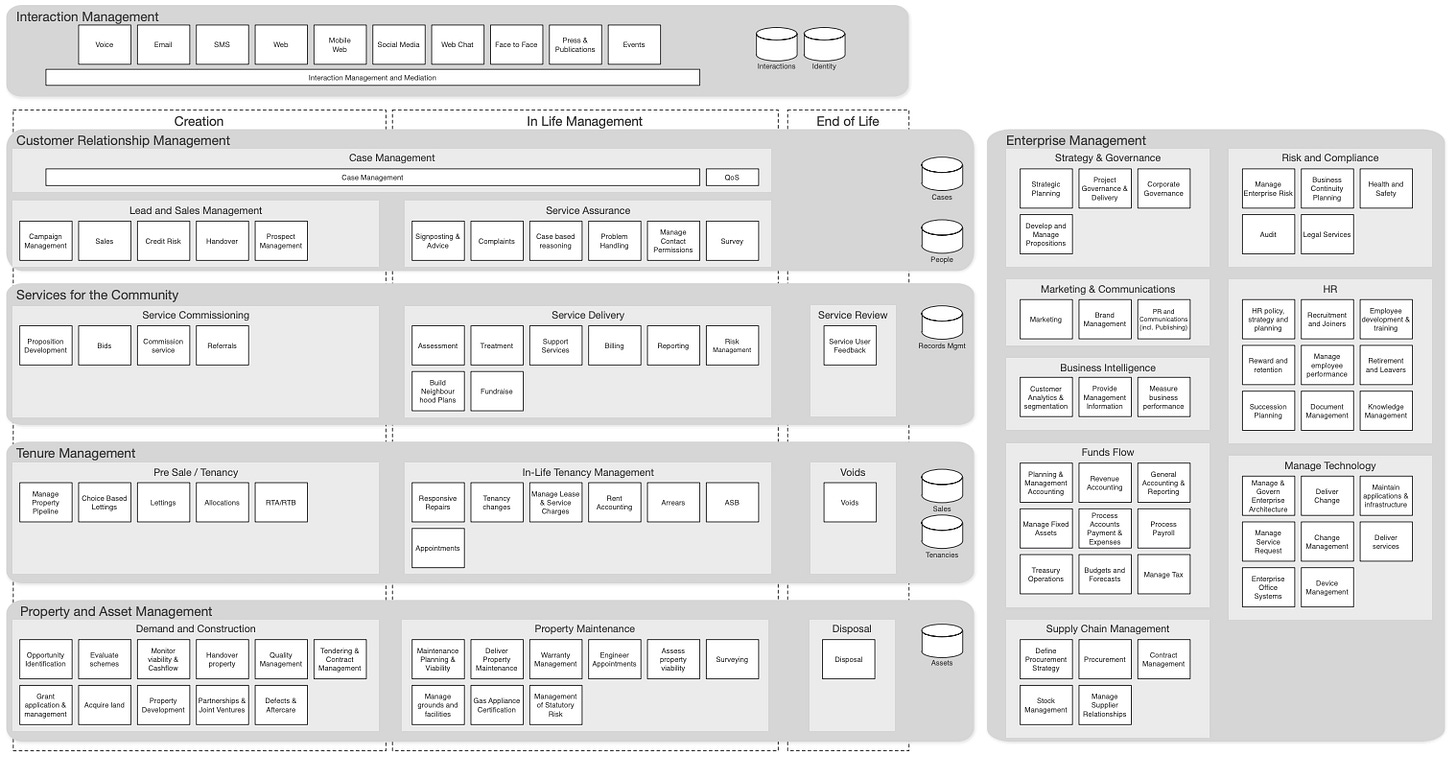In this newsletter we’ll talk about Business Capability models, what they are and why they are useful when you are thinking about and developing your IT Strategy.
In my upcoming How to IT Strategy Course, which you can sign up to be notified of early access and an early bird discount here, we’ll go into more detail around how to create and use Business Capability models and even provide some templates to assist the process.
What is a Business Capability model?
The wikipedia entry for Business Capabilities has a pretty good definition
“Business capability models represent high-level views of an organization from the perspective of its business capabilities. Essentially, they briefly describe everything that an organization can do. Business capability models are very stable and organizationally neutral in nature. They are largely independent of specific organizational structures, reporting relationships, political agendas and cultural aspects of individual business leaders, current initiatives and projects. Furthermore, most changes happening in organizations do not affect the fundamental structure of their business capability models.”
So, a Business Capability model should provide a complete but high level view of the ‘what’ of an organisation. Barring a significant change in the organisation’s business model the business capabilities of an organisation stay relatively stable, however their implementation might not. A business capability model also does not show the ‘how’ in terms of how the capabilities are implemented. Here is a generic example business capability model based on a UK Housing Association.

The majority of similar organisations would possess the same capabilities implemented in different ways with varying degrees of maturity and success.
Why are business capability models useful when thinking about IT Strategy?
A Business Capability model helps you view an organisation holistically, without getting distracted by potentially transient things such as organisation structure or specific stakeholders view of the organisation. Thinking at the levels of capability help you think about the Technology that needs to support the individual capabilities.
You can use a capability model to:
- overlay your current strategy or your planned strategy
- Think about how IT supports your business’s capabilities e.g. Application support
- overlay feedback from your stakeholders on areas of issue or opportunity.
- You can also use analysis of the business capability model to highlight gaps or deficiencies within your organisation which you may need to plan to close in your strategy as part of a gap analysis. For example, if as part of your strategy engagement you are aware of a new initiative e.g. moving into a new market, which might require capabilities you now know to be missing or deficient in your organisation, that you can plan to address as part of your IT strategy.
- I’ve personally found using a BCM really useful in presenting a visualisation of how key areas of the IT strategy will positively impact key business capabilities and then tied those capabilities into replaying how they support key elements of the business strategy to make it clear to stakeholders how strategic decisions in the IT strategy help achieve their business strategy
How to create a business capability model
In a previous Newsletter we talked about the value of thinking about your organisation’s value propositions and then Value Streams. These are important prior steps to informing your creation of your business capability model. Having mapped out your value streams you will very quickly draw out the business capabilities that are required to deliver the each step in your value streams.
As evidenced by the Housing Association example above, as capability models for similar companies share similar capability models for organisations For companies operating in more established industries there are also industry initiatives that have established common industry capability models e.g. in the Telecoms sector, that can be used to shortcut and sense-check some of your analysis and creation of your business capability model.
Newsletter, Podcast and Course
If you want to learn more about how to create great IT Strategies then please sign up at howtoitstrategy.com for early access (and an early bird discount!) to my upcoming course.
Please subscribe to this Newsletter so you don’t miss out on the next instalments. If audio is more your thing you can get the companion ‘How to IT Strategy’ Podcast on Anchor, Spotify , Apple Podcasts and all major Podcast Platforms
